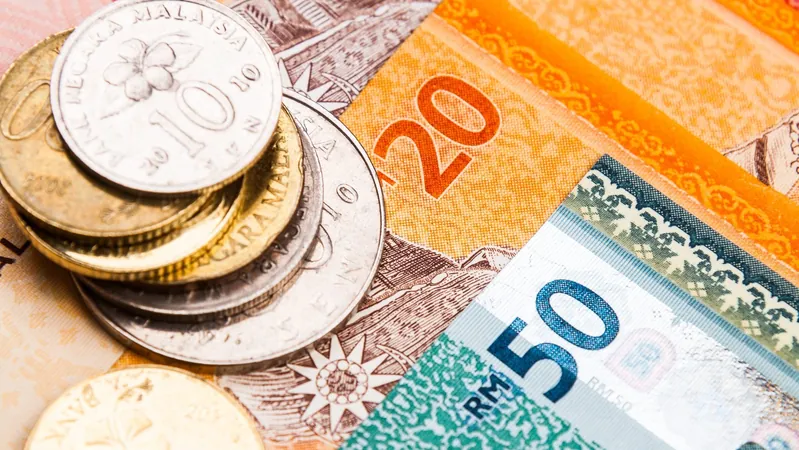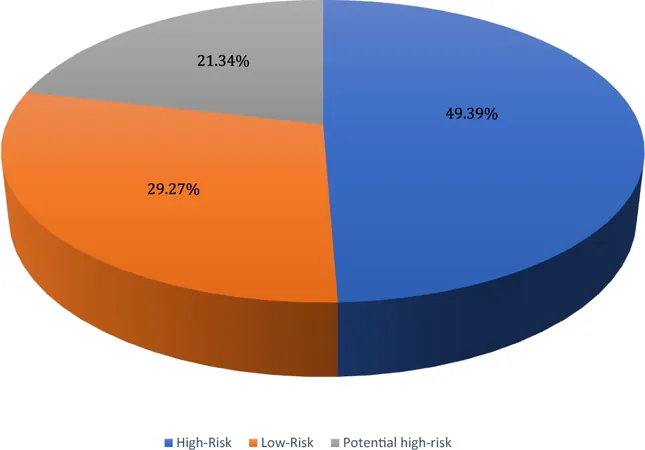
Surge in Malaysian Ringgit Due to Foreign Investments Hits Singapore Dollar's Purchasing Power Hard
2024-10-10
Author: Arjun
Introduction
The recent strength of the Malaysian ringgit has started to impact the purchasing power of the Singapore dollar, particularly felt by those who enjoy shopping, dining, and vacationing in Johor Bahru. Earlier this year, S$1 could fetch a substantial MYR3.5725; today, that amount yields only MYR3.28.
Factors Contributing to the Strength of the Ringgit
This shift can be primarily attributed to surging foreign direct investment (FDI) in Malaysia. The influx of foreign capital has not only strengthened the ringgit but also reversed its declining trajectory from the beginning of the year. Major tech giants like Microsoft, Google, ByteDance, Intel, and Amazon Web Services have made significant financial inroads into Malaysia, boosting investor confidence.
Malaysia’s Growing Investment Appeal
According to the Milken Institute’s Global Opportunity Index 2024, Malaysia is now viewed as one of the top contenders in Asia's emerging markets for investment opportunities. The international law firm Trowers has labeled Malaysia as “your next FDI destination,” citing investments rolling in from Singapore, the USA, China, Japan, and the Netherlands.
Historical Context of the Ringgit's Performance
It's noteworthy that just a few months ago, in April, the ringgit appeared to be on a downward spiral, hitting a low against the US dollar of US$1 to RM4.8 amidst rising inflation concerns. However, by early August, the currency began to recover, reaching an 18-month high of US$1 to RM4.42 as Malaysia's economic performance started to improve. This remarkable turnaround has led many to declare the ringgit as Asia's best-performing currency.
Forecasts for Future Investment and Economic Growth
A report from UOB’s Global Economics and Market Research last month indicated that Malaysia’s investment landscape is forecasted to remain robust, with a healthy outlook for foreign direct investments in the near future. The historical growth trend over the past 15 years—averaging 3.6% annually—suggests that, barring unexpected economic disruptions, Malaysia could attract an annual FDI inflow of RM51.6 billion (approximately S$15.7 billion) by 2030, a striking improvement compared to last year’s dismal figure of S$11.34 billion.
2024 Investment Trends
Encouragingly, for 2024, year-to-date figures indicate that Malaysia attracted US$3.1 billion (S$4.04 billion) in FDI during the first half of the year, signifying a 17.9% increase from the US$2.6 billion recorded during the same period in 2023.
Conclusion
With this trajectory, will the Malaysian ringgit continue to challenge the Singapore dollar? As economic conditions evolve, both investors and consumers may need to adapt to a shifting financial landscape in Southeast Asia.



 Brasil (PT)
Brasil (PT)
 Canada (EN)
Canada (EN)
 Chile (ES)
Chile (ES)
 España (ES)
España (ES)
 France (FR)
France (FR)
 Hong Kong (EN)
Hong Kong (EN)
 Italia (IT)
Italia (IT)
 日本 (JA)
日本 (JA)
 Magyarország (HU)
Magyarország (HU)
 Norge (NO)
Norge (NO)
 Polska (PL)
Polska (PL)
 Schweiz (DE)
Schweiz (DE)
 Singapore (EN)
Singapore (EN)
 Sverige (SV)
Sverige (SV)
 Suomi (FI)
Suomi (FI)
 Türkiye (TR)
Türkiye (TR)